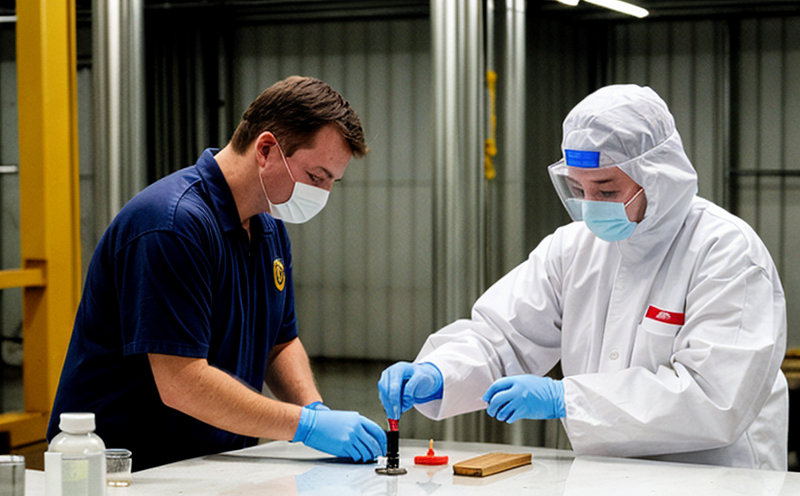ASTM D4332-21 Cold and Hot Storage Simulation
The ASTM D4332-21 standard provides a method to simulate the effects of cold and hot storage on packaging materials. This test is crucial for ensuring that packaging can withstand extreme temperature conditions without compromising product integrity or safety.
During this simulation, specimens are subjected to controlled thermal cycles that mimic real-world storage environments. The test helps identify potential weaknesses in the packaging design, such as seal integrity, material compatibility, and overall durability. By conducting this test early in the development process, manufacturers can make informed decisions about materials and designs that enhance product protection.
The ASTM D4332-21 procedure is widely used across various industries, including pharmaceuticals, food & beverage, electronics, and consumer goods. It ensures compliance with international standards while providing insights into the long-term performance of packaging under adverse conditions.
For instance, in the pharmaceutical sector, ensuring that packaging withstands cold storage (down to -20°C) is critical for maintaining drug stability. Similarly, in electronics manufacturing, hot storage simulation at temperatures exceeding 85°C helps prevent damage to delicate components during transit or prolonged exposure to high ambient conditions.
The test setup involves placing specimens inside a climate-controlled chamber that cycles between specified low and high temperature ranges. The duration of each cycle can vary depending on the specific requirements of the product being tested, but it often mimics typical storage durations found in warehouses or distribution centers.
Once testing is complete, samples are visually inspected for any signs of failure such as cracks, splits, deformations, or leaks. Additionally, mechanical properties like tensile strength may also be measured to assess changes resulting from the thermal cycling process.
Compliance with ASTM D4332-21 can enhance a company's reputation by demonstrating commitment to quality and safety standards. It is particularly valuable for businesses operating internationally where regulatory requirements differ significantly between countries.
In conclusion, ASTM D4332-21 Cold and Hot Storage Simulation plays an essential role in safeguarding products during transportation and storage. By identifying potential issues early on through rigorous testing protocols, manufacturers can improve their product's reliability and customer satisfaction.
Why It Matters
The importance of ASTM D4332-21 Cold and Hot Storage Simulation cannot be overstated. In today’s global supply chains, products must endure a wide range of environmental conditions from the manufacturing floor to end-user locations. Ensuring that packaging remains robust under these varying circumstances is paramount.
For example, in pharmaceutical logistics, cold chain integrity is vital for maintaining drug efficacy and safety throughout transport. Similarly, electronics manufacturers need to ensure that their packages can handle high temperatures without compromising component performance or causing damage.
The results obtained from ASTM D4332-21 provide valuable data on how packaging behaves under extreme conditions, allowing companies to refine designs and materials accordingly. This proactive approach not only enhances product protection but also contributes positively towards sustainability goals by reducing waste associated with substandard packages.
Moreover, compliance with this standard helps businesses meet regulatory expectations set forth by various authorities around the world. It fosters trust among consumers who value brands that prioritize both quality and environmental responsibility.
Benefits
Implementing ASTM D4332-21 Cold and Hot Storage Simulation offers numerous advantages for businesses operating in diverse industries. One key benefit is the ability to predict potential failures before they occur during actual usage scenarios. This foresight enables manufacturers to address issues early on, thereby reducing costs associated with recalls or rework.
Another significant advantage lies in improving overall product quality and reliability. By subjecting packaging materials to realistic stress conditions, companies gain deeper insights into their performance characteristics. Armed with this knowledge, they can make informed decisions about selecting appropriate materials that best suit the intended application.
The test also promotes innovation by encouraging experimentation with new materials or modifications to existing designs. Manufacturers can explore different combinations until finding those that offer optimal protection while minimizing environmental impact.
Furthermore, complying with ASTM D4332-21 enhances a company’s reputation among stakeholders including customers, investors, and regulators. Demonstrating adherence to recognized standards instills confidence in all parties involved, fostering long-term relationships built on trust and reliability.
Competitive Advantage and Market Impact
The implementation of ASTM D4332-21 Cold and Hot Storage Simulation provides significant competitive advantages for businesses seeking to differentiate themselves in crowded markets. By ensuring robust packaging through rigorous testing, companies can build stronger relationships with their customers based on trust and reliability.
Compliance with this standard also opens doors for international expansion by meeting regulatory requirements across different jurisdictions. This is especially crucial given the increasing trend towards globalization, where products need to be adaptable to varying climates worldwide.
Achieving compliance can lead to cost savings in the long run by preventing costly mistakes down the line such as product recalls or damage during transit. It also enhances brand image and reputation among consumers who increasingly prioritize sustainability and ethical practices.
Moreover, having a proven track record of quality assurance via ASTM D4332-21 can attract more investment opportunities from potential partners or investors looking for reliable partners within their supply chain network. This increased visibility attracts greater attention from stakeholders, ultimately contributing to sustained growth and profitability.





